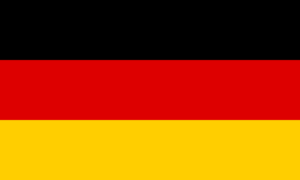
Learning German can be an exciting journey, but one of the first challenges learners encounter is the concept of grammatical genders. Unlike English, German nouns are assigned one of three genders: masculine, feminine, and neuter. Don’t worry if this sounds confusing; by the end of this post, you’ll have a good grasp of this fundamental aspect of the German language. Let’s dive in! 🏊♂️
The Three Genders 🧑👩👶
1. Masculine (Der) 👨
Nouns that are masculine are preceded by the definite article “der” (the) or the indefinite article “ein” (a/an).
Examples:
- Der Mann (the man)
- Der Hund (the dog)
- Der Tisch (the table)
2. Feminine (Die) 👩
Nouns that are feminine are preceded by the definite article “die” (the) or the indefinite article “eine” (a/an).
Examples:
- Die Frau (the woman)
- Die Katze (the cat)
- Die Lampe (the lamp)
3. Neuter (Das) 👶
Nouns that are neuter are preceded by the definite article “das” (the) or the indefinite article “ein” (a/an).
Examples:
- Das Kind (the child)
- Das Haus (the house)
- Das Buch (the book)
Tips for Learning Genders 🧠
1. Memorize with the Article 🔖
When you learn new vocabulary, always learn the noun with its definite article. Instead of just “Haus,” learn “das Haus.”
2. Use Color Coding 🎨
Color code your flashcards or notes. For example, use blue for masculine, red for feminine, and green for neuter. This visual cue can help reinforce the gender of each noun.
3. Practice Regularly 📅
Consistency is key. Practice using the nouns in sentences, and repeat them often. The more you use them, the more natural it will become.
4. Learn the Patterns 🔍
While there are exceptions, there are some patterns you can rely on. For instance:
- Nouns ending in -heit, -keit, -ung are usually feminine (die Freiheit – freedom, die Möglichkeit – possibility, die Zeitung – newspaper).
- Nouns ending in -chen or -lein are usually neuter (das Mädchen – girl, das Häuschen – little house).
- Nouns referring to male people or animals are usually masculine (der Vater – father, der Löwe – lion).
Common Pitfalls 🚫
1. False Friends 🤝
Beware of false friends—words that look similar in English but have different genders. For instance, “the car” in German is “das Auto,” not “der Auto.”
2. Changing Genders 🔄
Some words change their gender depending on their meaning. For example, “der See” means “the lake,” while “die See” means “the sea.”
3. Exceptions to the Rules 📜
As with any language, there are exceptions to the rules. For example, “das Mädchen” (the girl) is neuter, despite referring to a female person.
Fun Practice Activities 🎉
1. Gender Games 🎮
Play language games that focus on articles and genders. Many language learning apps offer fun, interactive ways to practice.
2. German in Context 🗣️
Watch German movies, listen to German music, or read German books. Pay attention to how the articles are used with different nouns.
3. Flashcards 📇
Create flashcards with nouns and their articles. Quiz yourself regularly to reinforce your memory.
Conclusion 🎓
Understanding genders in German might seem daunting at first, but with practice and the right strategies, it becomes much easier. Remember to learn each noun with its article, use helpful tools like color coding, and engage with the language regularly. Viel Erfolg (good luck) on your German learning journey! 🇩🇪✨
Final Tip 💡
Don’t be too hard on yourself if you make mistakes. Even native speakers sometimes get the genders wrong. Keep practicing, and you’ll improve over time!
Happy learning! 📚😊
Leave a Reply